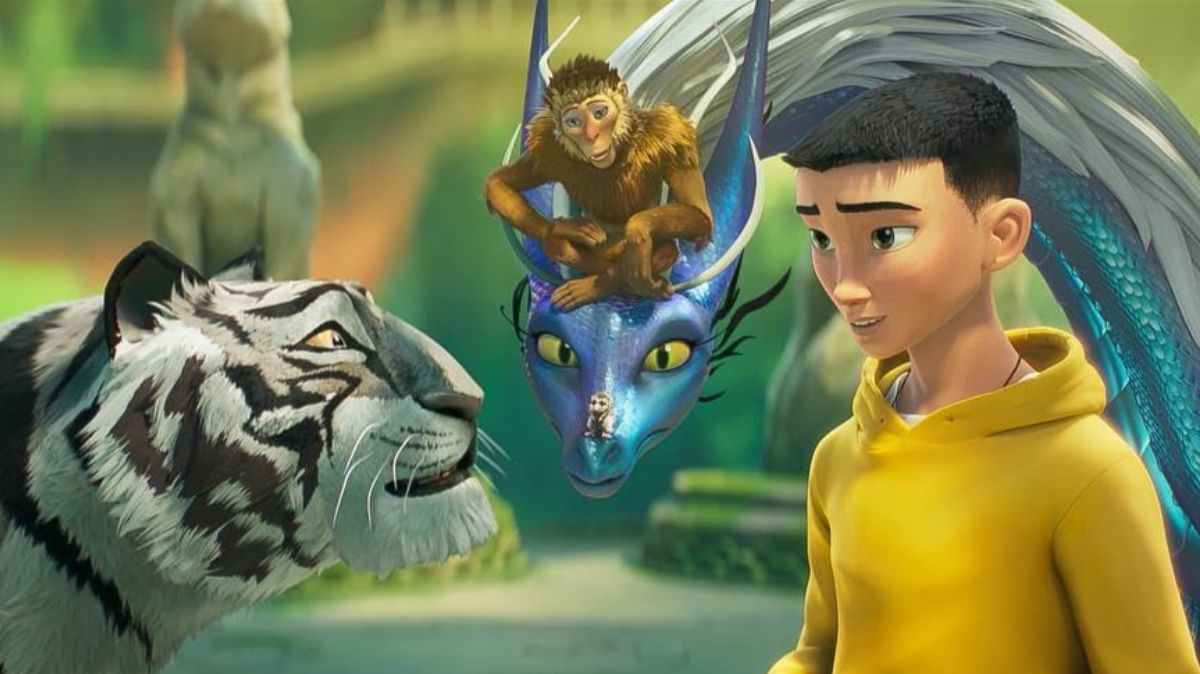In the enchanting realm of animated films, the expectations are set high, especially when a stellar cast is assembled for a project. “The Tiger’s Apprentice,” directed by Raman Hui, manages to gather notable names like Michelle Yeoh, Henry Golding, Brandon Soo Hoo, Lucy Liu, and Kheng Hua Tan as voice actors. However, the grandeur of the cast seems to overshadow the film’s overall quality, leaving audiences with a taste of disappointment.
Before the release, the film garnered attention primarily due to the star-studded voice cast. Unfortunately, this attention fails to translate into a captivating cinematic experience. As the plot unfolds, one can’t help but wonder when the narrative will gain momentum. The film lacks pace, leaving viewers with a sense of longing for a more engaging storyline.
One crucial element that often elevates animated films is the musical score, creating an emotional connection and enhancing the overall experience. However, “The Tiger’s Apprentice” falls short in this department, failing to deliver a grand musical performance that could resonate with the audience.
Visually, the film has moments of brilliance in choreography, building suspense momentarily. Still, these fleeting instances can’t compensate for the overall lackluster animation. It raises the question of why the production invested more in star-studded voice actors than in refining the animation quality, enhancing the musical composition, or developing a compelling narrative.
In the realm of animated classics, a comparison to timeless gems like “Spirited Away” is inevitable. While not intending to equate the two in quality, the choice to adapt a fantasy classic like “The Tiger’s Apprentice” demands a certain level of respect for the source material. Regrettably, the film falls short in honoring the essence of the original story.
The heartwarming relationship between Mr. Hu and Tom, a pivotal aspect of the narrative, is reduced to a mere mockery. This disregard for the emotional core of the story is one of the film’s most disappointing aspects. Even in creating a film primarily targeted at children, honesty in approach is crucial. The filmmakers seem to have neglected the essence of storytelling, transforming a potentially heartwarming tale into just another forgettable entry in the saturated landscape of unremarkable animated films.
Now, delving into the plot and ending, the film fails to provide a satisfying resolution, leaving audiences questioning the purpose and impact of the entire journey. The lack of a compelling narrative arc further compounds the film’s shortcomings, contributing to its negative reception.
In conclusion, “The Tiger’s Apprentice” may boast a star-studded cast, but this does little to salvage its lackluster animation, uninspiring music, and weak storytelling. The film falls short of capturing the magic and charm expected from a fantasy animated classic, leaving audiences with a sense of missed potential and disappointment. As the credits roll, one can’t help but reflect on the squandered opportunity to create a memorable addition to the world of animated cinema.
Reel Vs Book: A Cinematic Departure From The Pages Of The Original
When a beloved book makes its way to the big screen, fans often anticipate a faithful adaptation that captures the essence of the source material. Unfortunately, “The Tiger’s Apprentice,” directed by Raman Hui, takes a significant departure from the original book, leaving audiences with a cinematic experience that strays far from the literary journey.
In the transition from page to screen, the film loses the pacing and depth that made the book a captivating read. The plot, which held promise in the hands of the original storyteller, becomes a diluted version of its literary counterpart. Key elements that defined the richness of the narrative seem to have been sacrificed for the sake of visual spectacle.
One of the glaring differences lies in the treatment of characters and relationships. The soulful connection between Mr. Hu and Tom, a focal point in the book, is downplayed and altered in the film, turning a nuanced dynamic into a mere shadow of its original complexity. This shift not only diminishes the emotional depth of the story but also alters the core themes that made the book resonate with readers.
Moreover, the film’s pacing and structure deviate significantly from the carefully crafted flow of the book. Scenes that were pivotal in building tension and character development are either condensed or omitted, resulting in a narrative that feels disjointed and rushed. The intricate layers of the original plot are sacrificed in favor of a more streamlined but less satisfying storyline.
The changes in the film extend beyond mere adaptations for the visual medium; they seem to reflect a lack of understanding or appreciation for the nuances that made the book a literary gem. While some alterations are inevitable in the translation to cinema, “The Tiger’s Apprentice” diverges to a degree that may leave fans of the original work disheartened.
In the end, the cinematic rendition of “The Tiger’s Apprentice” not only falls short of capturing the magic of the book but also takes liberties that alter the very essence of the narrative. The film stands as a testament to the challenges of translating literature to the screen, with this particular adaptation missing the mark in preserving the heart and soul of the original masterpiece.












Thanks a bunch for sharing this with all of us you actually know what you’re talking about! Bookmarked. Please also visit my site =). We could have a link exchange arrangement between us!
You have brought up a very good details, thanks for the post.
I would like to express my admiration for your kind-heartedness for folks that should have guidance on this one concern. Your special commitment to passing the message around has been rather good and has surely allowed employees just like me to reach their ambitions. Your entire warm and helpful guide denotes a great deal a person like me and especially to my office colleagues. Thanks a ton; from all of us.